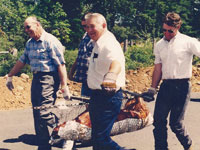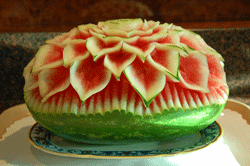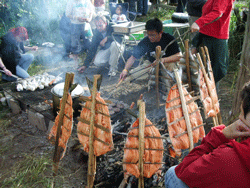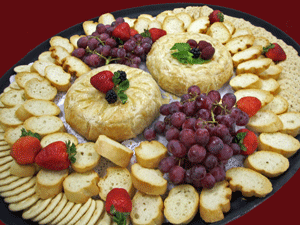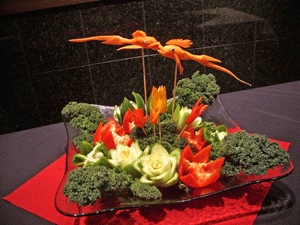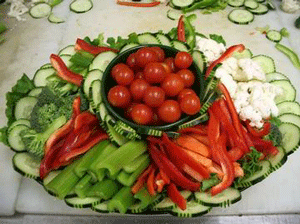
|
The Art of Playing with Food – Chef Tom Heintz’s Intro to cooking basics
The process itself can be intimidating when presented with the terminology and need to learn the uses of kitchen tools. Yet, as in any learning experience, we simply need to start and continue to experiment until we gain the needed perspective. The goal of this website is to provide some insight to useable techniques and understandable procedures that you can use in your journey to playing with food. If I can stimulate you enough to experiment, then I feel like I have accomplished my purpose. My path to food My Journey to the Art of Playing with Food began at an early age as the oldest of 8 siblings. We grew up on a small farm with animals and a very large garden. We didn’t have many of each type of animal, but we had quite a variety … mostly the standard fare consisting of cows, chickens, rabbits, sheep, ducks, geese and a horse. We even had a pond on the property that sported catfish and bass. Combine that with honey bees and a ¾ acre garden, we never worried about having food. We raised our own beef and even though it was a source of some concern to us the kids as “supposed owners” of some of these animals, we sampled just about all of it … with the exception of the horse. My father’s lineage stemmed from Germany and my grandfather used to make his own sausage from combinations of pork and beef. This was one recipe that had been handed down through the generations until my grandfather died without passing it on to my father; this was something that I deeply regretted and I have experimented since to reproduce. The problem with many such attempts was the matching of quality of my childhood memories and what they most likely consisted of in reality. Returning to the farm, my family enjoyed entertaining and the area around the pond among the trees was the consummate picnic area. Every holiday or special occasion that my father could take advantage of was picked as a food extravaganza. To put things into perspective, the usual number of people invited to these events ranged between 30-300 people, depending on the holiday. At the smaller more intimate gatherings of 30-50, my father’s specialty was salmon baked over an open fire on screens he had manufactured himself. Other events with larger groups involved roasted pig on a spit or slow cooked in the ground.
He was always open to new ideas and new cuisines depending on the people invited and perhaps their desires for a bit of creativity of their own. Of course no meal ended without the campfire and S’mores being consumed by all. With this type of food attitude in my family, and the size, it created a desire for all of us to center our reunions around food. We do this to this day. The difference between the old days when my father was alive and the family gatherings today is that no cuisine is off limits due to inhibitions, okay perhaps the exceptions are the grandkids, who are still a bit put off by some items on the menu. For me, I believe the key for me was the opportunity I had to visualize and sample all the different types of food through the years. This allowed me to have little fear of trying something new. When I attended culinary school in my later years, that love of food and the experimental nature took on a new meaning as I learned to add items that didn’t exist on the farm. Layers of the unknown were stripped away exposing opportunities to create new combinations that I had never imagined and to enjoy the succulent tastes that came from other cultures and even regional areas of the United States. If you watch TV and the many different shows that feature cooking, you will see that many chefs and instructors have combined the varying cultures and ingredients to create wonderful gastronomic sensations.
|

